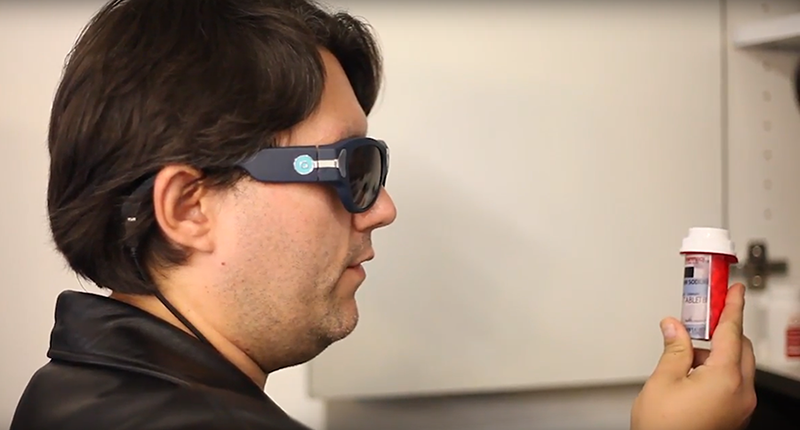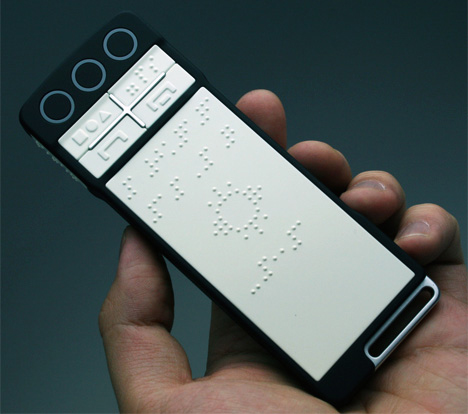Discover Cutting-edge Tools Made for the Aesthetically Impaired
The growth of cutting-edge tools for the visually impaired stands for a significant improvement in accessibility and freedom. Technologies such as wise glasses with AI capabilities and mobile applications designed to give auditory summaries are improving everyday experiences for customers.
Smart Glasses for Navigation

Smart glasses developed for navigating are reinventing the means aesthetically impaired individuals communicate with their environment. These advanced tools use a mix of video camera technology, artificial intelligence, and auditory responses to supply real-time information about surroundings. By using obstacle discovery systems, wise glasses can signal users to prospective hazards, enabling much safer wheelchair in both strange and familiar setups.
The combination of GPS modern technology better improves navigation abilities, enabling individuals to receive auditory instructions as they relocate. This hands-free technique not only fosters independence but likewise encourages visually impaired individuals to browse city landscapes with boosted confidence. Additionally, numerous smart glasses are outfitted with attributes that identify spots and road signs, giving contextual info that boosts the customer experience.
In addition, the growth of these gadgets is constantly progressing, with companies working to improve the accuracy of item recognition and broaden the series of navigational attributes. As wise glasses come to be more obtainable and affordable, they hold the potential to considerably change every day life for aesthetically damaged users. Eventually, these innovative tools stand for a vital action towards inclusivity, offering enhanced wheelchair and a better feeling of freedom for individuals navigating the world around them.

Mobile Apps for Daily Living
Exactly how can mobile applications boost the daily lives of visually impaired people? Mobile apps are changing the way aesthetically impaired individuals browse their settings, manage everyday jobs, and access information. These applications supply important support through different functionalities, promoting self-reliance and boosting lifestyle.
Several cutting-edge mobile applications are designed especially for everyday living. As an example, apps like Be My Eyes link aesthetically impaired individuals with sighted volunteers by means of video clip telephone calls, allowing them to get real-time aid with tasks such as checking out tags or browsing unfamiliar rooms. Seeing AI, created by Microsoft, utilizes artificial intelligence to describe surroundings, checked out text, and identify items, successfully transforming a smart device right into a powerful tool for everyday aid.
Additionally, navigation applications tailored for the visually impaired, such as Aira and BlindSquare, supply audio-based instructions and environmental information, making it possible for individuals to traverse their environments safely and with confidence. Past navigation and prompt support, mobile applications also support organization and job monitoring, with attributes that help users establish reminders, produce order of business, and track consultations. In recap, mobile applications serve as essential resources, encouraging aesthetically impaired individuals to lead more independent and meeting lives.
Wearable Technologies for Aid
Empowerment with technology is increasingly noticeable in the world of wearable devices developed to aid visually impaired people. These innovative devices incorporate flawlessly into day-to-day live, enhancing navigation and giving crucial responses to individuals. Wise glasses outfitted with video cameras can review and identify faces message out loud, enabling users to interact more confidently in specialist and social settings.
One more remarkable innovation is using haptic responses systems in wearable tools. These systems make use of resonances or various other responsive signals to convey info about the user's setting, such as obstacles or adjustments in surface, improving mobility and safety. Wearable innovations likewise consist of wristbands that link to smart devices, alerting users to notifications through subtle vibrations, thus improving connectivity without reliance on aesthetic cues.
As these modern technologies remain to develop, they are not only improving freedom for visually damaged people however additionally fostering a better sense of addition in society. By bridging the gap between obstacles encountered in daily living and the capacity for autonomy, wearable modern technologies work as essential devices in the quest this page for equality and empowerment for those with aesthetic problems.
Audio Description Tools
Audio description devices play an essential role in boosting access for aesthetically damaged people, providing them with the capability to engage with visual media. Assistive technology for the blind. These tools supply narrated descriptions of essential aesthetic aspects in films, television shows, and live performances, ensuring that individuals can fully understand the context and emotions conveyed through visuals
Audio description can be integrated right into different platforms, consisting of streaming solutions, cinema testings, and live cinema. Many preferred streaming solutions now include audio summary as an access feature, permitting customers to choose it conveniently. In addition to mainstream media, specialized apps likewise exist, giving audio summaries for art exhibitions, museums, and various other cultural events.
The effectiveness of audio description hinges on the skill of the storytellers, that must communicate aesthetic information succinctly without detracting from the initial audio. Developments in this area are likewise leading the means for even more individualized experiences, where users can readjust the level of information and pacing according to their preferences.
Braille Innovations and Gadgets
Braille tools and technologies have actually significantly transformed the means visually impaired people interact with message and info. Modern advancements have caused the development of functional devices that improve proficiency and freedom among users. Especially, Braille present technologies have evolved, enabling dynamic analysis experiences. These gadgets convert digital message right into Braille, allowing individuals to access a vast selection of information on tablets, smartphones, and computers.
In addition, portable Braille notetakers incorporate standard Braille input with contemporary functionalities, facilitating note-taking, organizing, and file editing and enhancing on the go. Screen readers for the blind. These small gadgets commonly feature text-to-speech abilities, connecting the void between Braille and acoustic info
On top of that, cutting-edge Braille printers have emerged, permitting users to generate Braille tags, documents, and educational materials effectively. This ease of access fosters better involvement in specialist and instructional atmospheres, eventually promoting inclusivity.
Additionally, study right into wise wikipedia reference Braille technologies continues to broaden. Devices that integrate expert system are being discovered to provide real-time navigation support and contextual information, boosting the user experience in varied settings. Generally, these technologies show a dedication to equipping visually damaged individuals with modern technology, guaranteeing they can conveniently access and involve with the world around them.

Conclusion
The improvement of innovative devices for the visually damaged dramatically enhances independence and top quality of life. These visit site modern technologies not just foster better incorporation but additionally advertise freedom in everyday activities, ultimately contributing to a much more accessible and equitable culture for visually impaired people.
As smart glasses end up being a lot more easily accessible and economical, they hold the possible to significantly change day-to-day life for aesthetically damaged users. Mobile applications are changing the means aesthetically impaired users browse their settings, manage day-to-day tasks, and gain access to details. Applications like Be My Eyes attach visually damaged customers with sighted volunteers via video clip telephone calls, allowing them to get real-time help with tasks such as reading labels or browsing unknown rooms.In addition, navigating applications customized for the aesthetically impaired, such as Aira and BlindSquare, offer audio-based directions and environmental information, enabling customers to traverse their environments securely and confidently.The advancement of cutting-edge devices for the visually impaired substantially boosts freedom and quality of life.